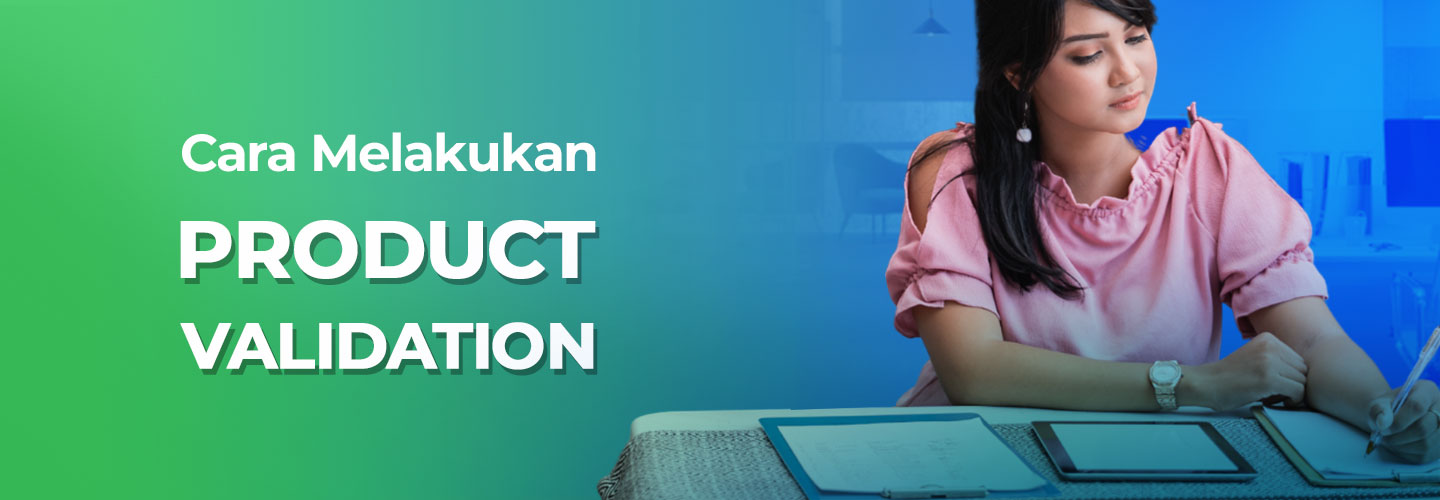How to Run Product Validation in a Business

When starting a business, you need to determine the market for your product. This is necessary so as not to waste time and energy developing a product that is thought to be liked by many people, but turns out to be unpopular at the time of its launch.
The product validation process is a series of idea tests to see whether the idea can be implemented. By doing product validation, you won't spend money and time developing something that people won't buy.
Product validation can help you better understand potential customers and market demand. It's important to do this early in the process so you can determine the scope of the product before development begins.
How to Do Product Validation
To be able to validate a product idea, there are various ways you can do it. Depending on each business model, there may be slightly different approaches. Here are the main strategies you can use to validate your product.
1. Make sales
The first and best way to get product validation is to get some sales. Until people are willing to pay for the products you make, your business is nothing more than a collection of assumptions. Getting to know potential customers is important, but you can't build a business until people make transactions.
Nimi Kular, co-founder of Jaswant’s Kitchen, has particular experience in validating product ideas for her family business. He says, “Market evaluations, surveys, and feedback from friends and family can point you in the right direction. But money is the only thing that can validate a product.”
2. Perform competitor analysis
When you are still in the idea stage or looking for a product to sell, clear research and analysis is needed. You can reduce risk and build confidence in your product idea by exploring existing markets.
You need to find out the amount of demand for your product in order to build a viable business. Paying attention to competitors is a good way to ensure there is a healthy market for your product. Compare what they did with what you planned.
The existence of competitors in an industry confirms that there is market demand for the product. To take a product to the next stage, you need to assess the market size and opportunity. Ultimately, this is where you will find out whether your product will be commercially viable and its likelihood of making a profit.
Several ways to carry out this analysis can be done using a series of data collection processes. You can see competitors' followers on social media, the amount of traffic the website has, and estimate the demographics of its target users.
3. Conduct stress tests for users
When launching a new product or developing an existing product, you must ascertain user needs before making significant investments. You will talk to potential customers and see their initial reactions to the product.
Find markets and exhibitions to showcase your brand and products. Prepare a list of questions to find out their preferences for the products they are currently using. In the early stages, test different price points to see the best options for your product and test their willingness to purchase the product.
4. Build, test, and iterate on your MVP
Remember to build your product roadmap iteratively based on user feedback. It's important to be able to communicate and get feedback through free surveys such as filling out Google Forms or SurveyMonkey.
To achieve good survey results, collect data for the minimum viable product (MVP). Include people who aren't family or friends for a more honest and less biased response.
5. Measure response on social media
Another way to validate product ideas is through social media. Followers on social media are the ones who know you best from everything that is visible. Every day, millions of people express their feelings on social media and talk about their experiences after purchasing a product.
Beauty brands like Cadence leverage their social media communities for product development. Stephanie Hon, CEO and founder of Cadence, revealed via Modern Retail that their customers often reach out on social media to ask about product colors they want to see.
Things like that can provide predictions for future product emergence. Any input or questions from customers can be good enough validation so you can launch a new product.
The product validation process is indeed an important thing that can be done in a business. However, don't let the process delay your product launch because you don't have confidence in it. When you get into business, you will really know how to make products even more perfect for customers.